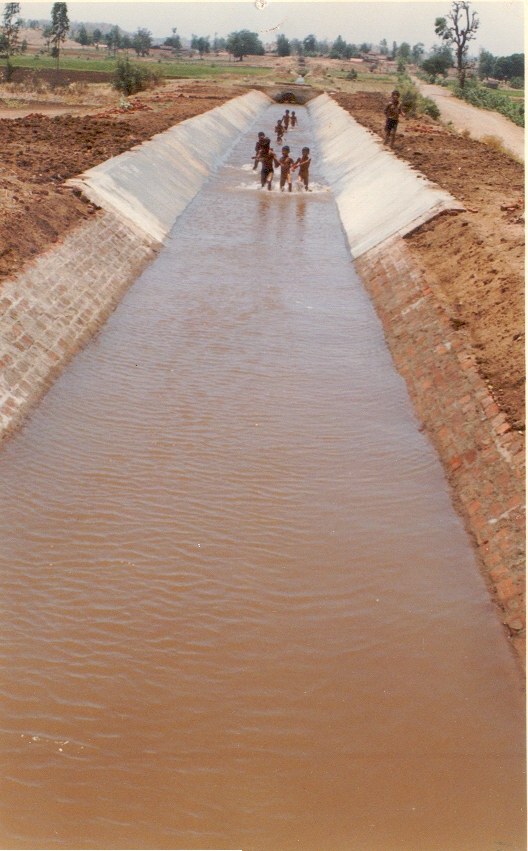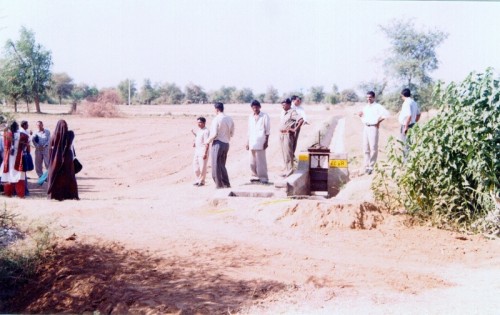TBI Water Week: Water Committee Shows the Way to Equal Distribution and Optimum Utilization of Water
Continuing our water series this week, today we profile a few remarkable people and organizations who have turned around several villages in Gujarat, a largely arid part of the country, into fertile agricultural land. This article demonstrates nicely what can be achieved when government agencies, non-governmental organizations and local governance bodies like water committees can work together and inspire community-level participation and ownership.

Continuing our water series this week, today we profile a few remarkable people and organizations who have turned around several villages in Gujarat, a largely arid part of the country, into fertile agricultural land. This article demonstrates nicely what can be achieved when government agencies, non-governmental organizations and local governance bodies like water committees can work together and inspire community-level participation and ownership.
Rains in Gujarat have brought smiles on the faces of farmers. Rainfalls in the last few years have been erratic. Since last ten years, efforts have been made to store rainwater. The water is beneficial for irrigation purpose. It is stored in check dams which are not sufficient for serving the irrigation purpose. Seeing this, a new scheme was launched in the nation. This project is known as Water shed. It is considered the most successful scheme till date. Significant improvements have been made for forest, agricultural land and water under this project. Voluntary organizations have made significant contribution towards water storage. Watershed means ‘a huge water body’. Water stored in the highest range between one or two village reaches the lower-most region, which is the main motive of scheme. In this process various structures like check dam, plugging of lanes, wire mesh etc are created which help in storing water at different levels.

Different organizations have worked on this project. Sadguru Water and Development Foundation, Aga Khan Rural Support programme, Development Support Center, Utthan, Kundla Taluka Gram Vikas Mandal and Manav Kalyan Trust are few of them. Premjibapa and Shyamji Antala, two old men from Saurashtra started the new wave of storing water through innovation. Premji started a water revolution under the name of ‘Vruksh Prem Seva Trust’ which brought about change in the villages of Jaamkarodana taluka. Rivers of these villages have become active through watershed and other water storage activities. He left Mumbai and settled at Upleta after retiring from his business. His name is taken with great pride in the field of water storage. Shyamji Antala is now a well-known personality at national and international forums. He has made farmers understand the importance of recharging and storing water. In all, he has recharged over one lakh wells in villages.
Once the rains have filled the canals and rivers, it’s time to talk about the role played by water committees. With the guidance and support of voluntary organizations, small groups have done wonders. Bamanmor, Rangpur, Thaloda and Kiyadar villages have successfully done the impossible. In order to make the Gujarat irrigation scheme a success, the government introduced a partnership model in 1995. On a pilot basis, Development Support Center was entrusted with the task of providing Dharoi irrigation scheme for Thalotha village under Participatory Irrigation Management (PIM) model. Along with the state government, DSC successfully implemented the scheme. The farmers reaped the benefits of the scheme. The organization was entrusted to implement the scheme in other villages. Today 40 villages are actively involved in the scheme.
Rangpur is one of the villages which come under Visnagar taluka of Mehsana Jilla in Gujarat. The population of this village is 1426. Water committee was set up in 1983-84 but had become void, and was reincarnated by DSC in 1996. The water from Dharoi dam could suffice the irrigation need of villages but Rangpur village had to repair its canals. Survey was conducted jointly by officials from the irrigation department, DSC and committee representatives. On the basis of the survey, estimation was made for repairs of canals and a map was prepared. Generally, for major repairs, the entire cost is borne by the government and the beneficiaries shrug away from the responsibilities. However, in this case, the total repair cost was Rs 9,16,000 and 10% of this i.e. Rs. 91,600 was borne by the farmers’ committee. Under the supervision of the committee, a canal repair committee was set up. The repair committee was divided into various tasks like surveillance committee, finance committee, goods committee, etc. Once the canal was repaired, accounts were also maintained by the committee.

In 1998, for irrigating Rabi crops, 125 hectare of land was allotted under the irrigation scheme but the enthusiasm of farmers enabled irrigation in 166 hectare of land. Similarly in 1998-99 instead of the allotted 140 hectare, 158 hectares could be irrigated. The dearth of water at dams prevented farmers from availing irrigation facility for the next two years. In the current year, 178 hectares of land could be irrigated against the 125 hectares allotted. This indicates that proper planning and implementation helped in more land coverage under the scheme. Control in usage of water enabled more water allocation for irrigation. Water allocation in the village became timely and controlled. Better co-ordination was developed between farmers and the Irrigation department.
Every year the canals have to be cleaned and maintained. The government charges Rs.2 per meter for doing the same. The committee at Rangpur, with a view to saving money and taking ownership, decided to clean the 10km long canal by themselves. Cleaning the canal enabled 5 more hectare of land to get the benefit of water.
The scheme stood out as each drop of water was judiciously used. The value of water was understood by farmers of these regions. The water supply committee proved beneficial to the farmers in the following ways:
- Each farmer was informed about the amount of water he would receive. He planned his crops accordingly.
- Each farmer received equal proportion of water without any distinction
- The land became more fertile
- The canal was maintained and repaired regularly
- Full support was received at local level for implementation of irrigation scheme
- Crops were cultivated one at a time. Rules were the same for all. If a committee member broke the law then he was fined
- Time of the farmer was saved. It could be utilized for other works
The Dharoi irrigation scheme proved to be beneficial to farmers of Rangpur and other villages. The villages of Mehsana and Patan helped to foresee various issues and their solutions of involving people participation. If the entire nation, which has 125 lakh hectare agricultural land, involves the farmer in its schemes and allows allocations to be made by farmers, the land will become much greener.
The water stored in Dosalidhuna dam is distributed through pipelines to villages. There are 48 members in the committee who work hand in hand to resolve the water issues. The total cost of distributing water comes to Rs.8,13,040 out of which seven lakhs can be obtained from state government’s Famine Relief Fund and Rs.83000 from Jilla Gram Vikas Agency. It is often seen that funds received for this purpose are utilized for other activities. But Bamanbori committee saved Rs.74,000 from the fund and created another reserve fund. The corpus fund is bound to remain as a reserve fund because the accounting and other expenses are borne from taxes.
The efficiency by the water committee has proved that people in village are often seen as illiterate and dull but are aware of their responsibilities. The government should allow water committees to look after the distribution of irrigation needs in the entire nation. This would give authority and wealth in the hands of poor.
Source: Charkha – Development Communication Network, Gujarat
This story made me
- 97
- 121
- 89
- 167
Tell Us More
We bring stories straight from the heart of India, to inspire millions and create a wave of impact. Our positive movement is growing bigger everyday, and we would love for you to join it.
Please contribute whatever you can, every little penny helps our team in bringing you more stories that support dreams and spread hope.



















